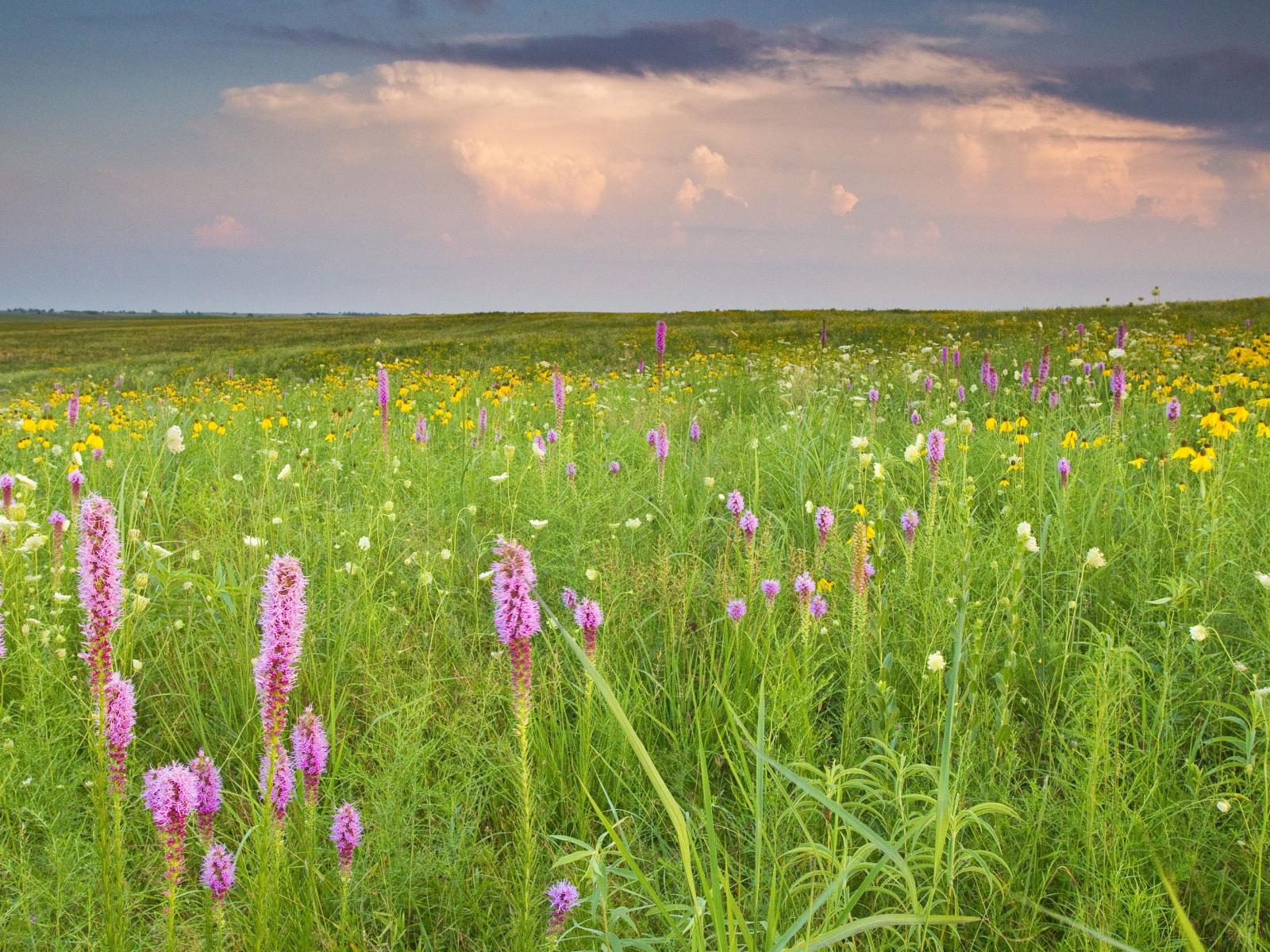Drought Spells Changes for Soil Microbes
Researchers found that soil drying altered metabolic pathways within soil microbial communities.

Researchers at PNNL and Kansas State University found that soil drying significantly affected the structure and function of soil microbial communities.
The Science
Researchers at the U.S. Department of Energy’s Pacific Northwest National Laboratory and Kansas State University found that soil drying significantly affected the structure and function of soil microbial communities.
A warming Earth is predicted to result in increased drought extent and intensity in the highly fertile and productive grasslands of the central United States. These soils store large reserves of carbon. The decrease in soil moisture due to drought has largely unknown consequences on soil carbon cycling and other key biogeochemical cycles carried out by soil microbiomes. Researchers at the U.S. Department of Energy’s Pacific Northwest National Laboratory and Kansas State University found that soil drying significantly affected the structure and function of soil microbial communities. This included shifts in expression of specific metabolic pathways, such as those leading toward the production of compounds that build up within cells to keep microbes alive during drought.
The Impact
This study demonstrates the application of a multi-omics approach to decipher details of the soil microbial community’s metaphenomic response to environmental change. The approach should apply to studies of other complex microbial systems as well. This research supports the Genomic Science mission by revealing fundamental principles that guide the interpretation of the genetic code into functional proteins, metabolic pathways, and the metabolic/regulatory networks underlying the systems biology of microbial communities. Advancing fundamental knowledge of these systems will enable understanding of the role of biological systems in the environment and how environmental change affects soil microbial communities.
Summary
Warming temperatures are causing shifts in precipitation patterns in the central grasslands of the United States, with largely unknown consequences on the collective physiological responses of the soil microbial community, i.e., the metaphenome. In this study, researchers used an untargeted omics approach to determine the soil microbial community’s metaphenomic response to soil moisture and to define specific metabolic signatures of the response. Specifically, they aimed to develop the technical approaches and metabolic mapping framework necessary for future systematic ecological studies.
The research team collected soil from three locations at a field station in Kansas, incubated the samples for 15 days under dry or wet conditions, and compared them to field-moist controls. The team determined the microbiome response to wetting or drying through 16S rRNA amplicon sequencing, metatranscriptomics, and metabolomics. Researchers then assessed the resulting shifts in taxa, gene expression, and metabolites. Soil drying resulted in significant shifts in both the composition and function of the soil microbiome, such as changes in metabolic pathways that lead toward the production of sugars and other osmoprotectant compounds. By contrast, few changes occurred after wetting. The team used the combined metabolic and metatranscriptomic data to generate metabolite-reaction networks to determine the metaphenomic response to soil moisture transitions, such as generation of trehalose under dry conditions. Using this approach, researchers showed that despite the high complexity of the soil habitat, it is possible to generate insight into the effect of environmental change on the soil microbiome and its physiology and functions, thus laying the groundwork for future, targeted studies.
Contact
Janet Jansson
Pacific Northwest National Laboratory
janet.jansson@pnnl.gov
Funding
This research was supported by the Department of Energy Office of Biological and Environmental Research (BER) and is a contribution of the Scientific Focus Area “Phenotypic response of the soil microbiome to environmental perturbations.” This research was also supported by Environmental Molecular Sciences Laboratory (EMSL) open call proposal number 48784, Dissecting and Deciphering of the Soil Microbiome. EMSL is a U.S. Department of Energy (DOE) Office of Science user facility sponsored by the DOE’s Office of Biological and Environmental Research and located at PNNL. A portion of the research was conducted using PNNL Institutional Computing (PIC) resources and partially supported by the Microbiomes in Transition Initiative under the Laboratory Directed Research and Development Program at PNNL. PNNL is a multiprogram national laboratory operated by Battelle for the U.S. DOE under contract DE-AC05-76RL01830.
Revised: July 31, 2019 | Published: August 1, 2019
T. Roy Chowdhury, J.- Y. Lee, E.M. Bottos, C.J. Brislawn, R.A. White III, L.M. Bramer, J. Brown, J.D. Zucker, Y.-M. Kim, A. Jumpponen, C.W. Rice, S.J. Fansler, T.O. Metz, L.A. McCue, S.J. Callister, H.-S. Song, J.K. Jansson, “Metaphenomic Responses of a Native Prairie Soil Microbiome to Moisture Perturbations.” mSystems 4(4), e00061-19 (2019). [DOI: 10.1128/mSystems.00061-19]